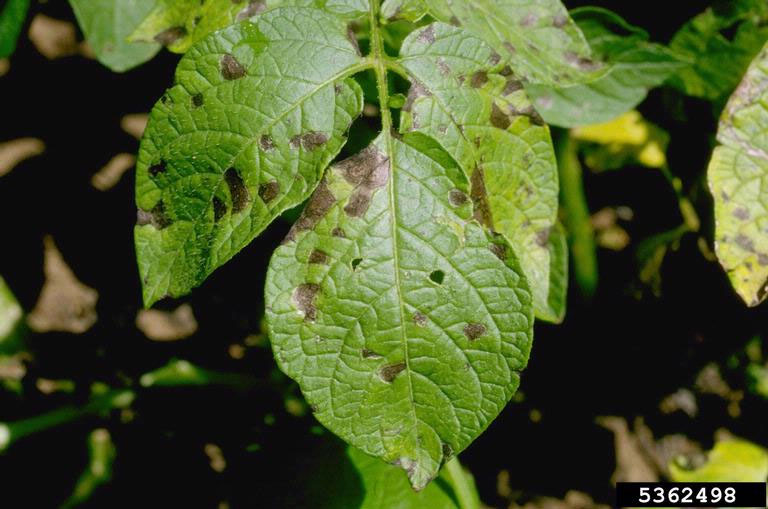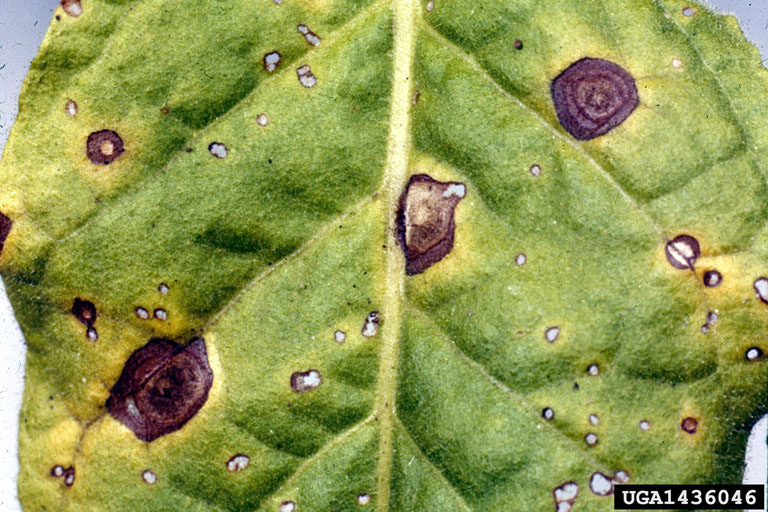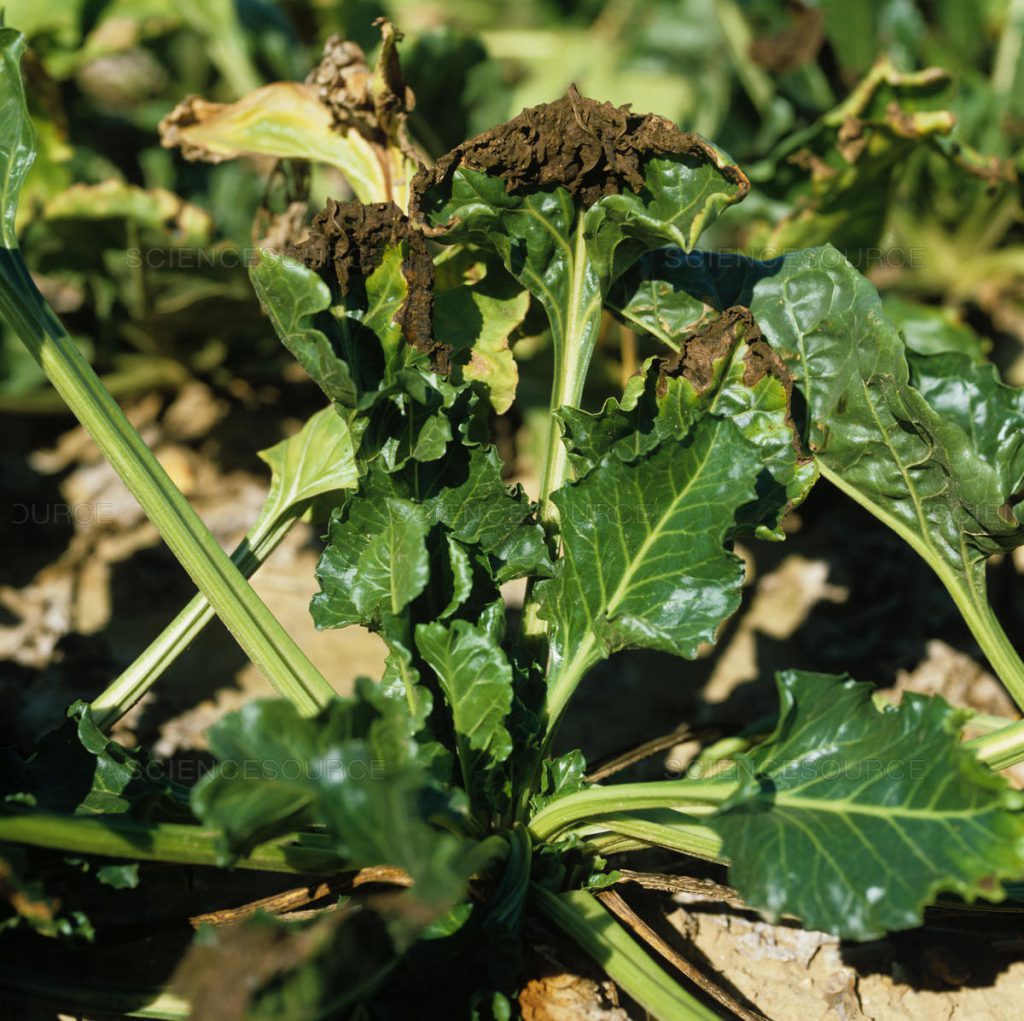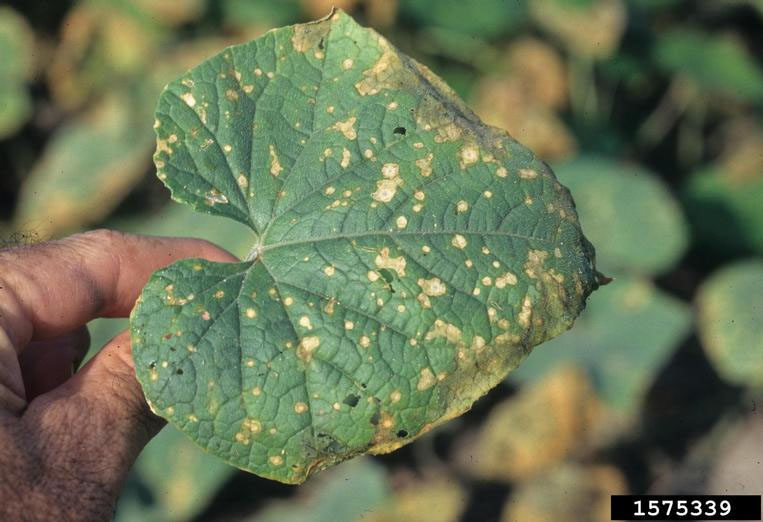Scab of cucurbits disease affects all cucurbits (cucumber, melon, pumpkin, watermelon). The disease is particularly severe in cucumbers.
Scientific name: Cladosporium cucumerinum
Greek name: Κλαδοσπορίωση Αγγουριάς
Symptoms
Scab of cucurbits causes spotting on leaves and fruits. The fungus survives as a saprophyte in the soil, also in plant debris and in the greenhouse, in various materials.
All above-ground parts of the plant are affected.
Numerous light green watery spots appear on the leaves initially. They then turn grey with a chlorotic algae color. There the tissues become dead and fall off, so that the leaves appear ragged. When the infestation occurs on young plants, they rot. Under conditions of high humidity, mycelium develops which is oily in color.
Infestations on fruits (especially young ones) are more intense and severe, with initial small spots resembling insect nests. Later they turn brown, sink and ulcers develop, from which sticky, brown drops are secreted. Secondary pathogens develop in these infestations and the fruit rots.
In pumpkins the damage resembles craters, caused by anthracnose.
Pathogen – Growth conditions
Scab of cucurbits is caused by the fungus Cladosporium cucumerinum. It is favored by wet weather and temperatures below 20 degrees Celsius. Strong temperature changes accompanied by humidity increase the susceptibility of plants to attack by the fungus.
Infection is carried out by the conidia. The vegetative texture dissolves the tegument and the mycelium begins to grow intracellularly.
The fungus secretes enzymes that, as the disease progresses, dissolve the cellular hairs of the plant tissues and the protoplasm, completely destroying the cells.
The fungus can attack all aboveground parts of the plant, including leaves, stems, shoots and fruits. On leaves and offshoots the first symptoms are light green, watery spots. These spots gradually turn grey to white and a yellow ring appears around the spots. Elongated spots appear on stems and shoots. The tissue of the spots on the foliage tears easily as it dries out giving the foliage a ‘wilted’ appearance. When younger leaves are affected, they are stained with dead, yellow spots. The top shoots of young plants may also become dead.
Fruits can be infected at any stage but are most susceptible when young. The spots initially appear as small, indented areas 3-4 mm in diameter. A sticky substance may be secreted from the infected area, particularly if the epidermis is damaged.
Treatment
Scab of cucurbits can best be treated by using resistant varieties. One of the most effective ways to prevent the disease is to grow the plants in soils with good aeration and drainage. Also the use of pathogen-free seed is very important. Rotation of crops for at least three years with plants other than cucurbits is recommended.
Furthermore, protective fungicides are recommended. Some of the recommended fungicides are:
Antracol 64 WP (active substance: Propineb 65% WP)
Daconil 75 WP, Fungistop 75 WP, Jupital 72 SC (active substance: Chlorothalonil 72-75%)
Crittam WP, Zirafin 76 WG (active substance: Ziram 76% WP or WG)
Carbendazim-Veterin 50 WP (active substance: Carbendazim 59% WP)
Source
www.bayercropscience.gr
Cladosporium cucumerinum
Cladosporium cucumerinum (scab of cucurbits)
Tags: PLANT DISEASE





